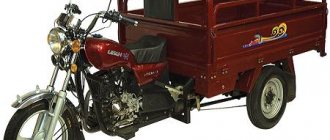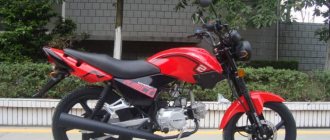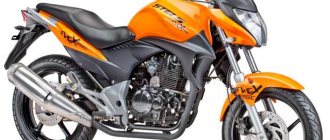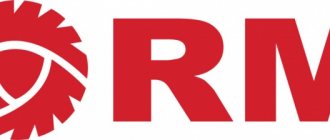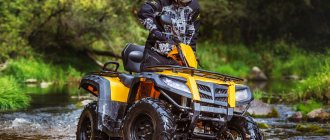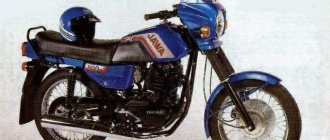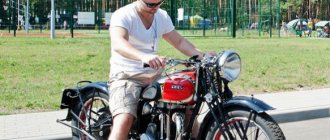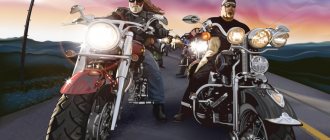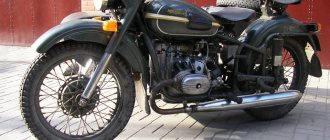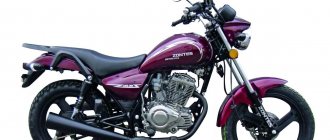Review of the rare and unique IZH-K
After the Second World War, when life in the USSR began to return to normal, there was a need for hunting smoothbore guns for the mass consumer. Moreover, the gun had to be simple, reliable and of high quality. Izhevsk gunsmiths coped with the task remarkably well: in 1954. year, a new, lightweight, unpretentious and trouble-free smoothbore hunting shotgun IZH-K appeared, followed by several modifications of this shotgun of various calibers and in different designs from ordinary to one-piece. In total, about 58 thousand copies of this single-barreled hunting rifle were produced. In 1964. year, the production of IZH-K was completely stopped, as it was replaced by a more modern model IZH-18.
Shotgun "IZH-K"
Table medal hunting rifle Izh-K 1955-1963
I often went hunting with my grandfather Harut and learned a lot from him. The fact is that hunting and fishing in the conditions of Armenia has its own characteristics. Harut and I hunted wild boars and jackals in reed thickets, badgers in burrows, and fished during the spring flood of the Araks River.
Harut lived in a good house made of pink tuff. We entered the house, he began to fuss, got out of bed and greeted me, as always, with a friendly smile:
- Hello, Tolya-jan...
- Hello, Harut. (From the very beginning of our acquaintance, he asked to call him that only).
We sat for a long time, drank the purest grape vodka, which Harut made himself, and he told me an interesting story about hunting a leopard. Then he went into another room and brought out the IZHK gun that was already familiar to me:
“I used this gun to kill a leopard.” I’m giving it to you... I won’t need it anymore...
I looked at his son.
“He’s not a hunter,” Harut noticed my glance.
I thanked Harut for the gift.
A month later he was gone. His fellow hunters were at the funeral and fired three shots from their rifles. I shot his gun.
This is how I became the owner of the IZHK gun.
I think that few modern hunters have heard about this gun, much less own it.
IZhK shotguns were produced at the Izhevsk Mechanical Plant in the period 1955–1964. This is a single-shot hammer-fired single-barreled shotgun with a flip-up barrel. My gun was 16 caliber, but I knew that the factory also produced guns of 20, 28, 32 calibers. I don’t remember exactly, but the weight of the gun was just over 2.5 kg, and it was easy to hunt with it in August - September, when it was still summer heat in the Ararat Valley of Armenia.
I knew that Harut was a good shot with this gun, but I decided to check its performance myself. The accuracy turned out to be decent. The sharpness was, in my opinion, good - the pellets (No. 4) at a distance of 40 m penetrated 2.4 times their diameter into the pine board. Harut advised me to zero the gun at 40 m, citing the fact that the barrel is long (780 mm), and with a long barrel you can hit game at a greater distance, since in this case the speed of the projectile and the accuracy of fire increase.
At first I thought that the gun had a barrel with a drilled cylinder, but after checking the accuracy of the shot with shot, I realized that the drilling of the barrel was a cylinder with pressure (muzzle constriction 0.25 mm). Judge for yourself: from a distance of 40 m, 42% of shot No. 4 hit a circle with a diameter of 75 cm, and this is a completely normal result.
I also zeroed with a bullet at a distance of 40 m. I shot with a round bullet - there were no others. After five shots, I determined the dispersion diameter - it turned out to be 15 cm. Thus, the IZhK had good accuracy of fire with both shot and bullet.
I strived for greater accuracy of combat when hunting geese and ducks, since I had to shoot almost at extreme distances. For this purpose, I sprinkled the shot with a small amount of starch. When hunting partridges there was no such need: I shot them at distances of up to 20 m.
The good accuracy of the bullet helped me a lot when hunting wild boars. There were often cases when I calmly took a wild boar at distances of up to 60 m. The fact that the gun shot buckshot and large shot was very pleasant. My success shooting jackals was simply amazing. (Perhaps it mattered that a premium of 10 rubles was paid for the jackal, plus 2–3 rubles for the skin). However, I successfully shot jackals with shot number one.
The distribution of pellets on the sighting target (uniformity of the scree) was without “windows”. In any case, there were no empty spaces in which the teal could fit. The fire of the gun remained constant throughout the two years of my hunts with IZHK, i.e. there were no significant differences between individual shots in accuracy, sharpness and uniformity of fire, although I loaded the cartridges myself and could, of course, be mistaken in the ratio of the charge of gunpowder and shot shell.
The receiver of the gun had a rear sight, which I really liked - I was used to shooting from military small arms.
The chamber (70 mm) and the IZhK barrel were chrome-plated. The gun was easy to clean. In hunting stores of that time it was possible to purchase metal cartridges specifically for this chamber.
The peculiarity of the trigger mechanism was that if the gun was not locked, it was impossible to cock the hammer, and when the hammer was cocked, it was impossible to open the gun.
I once had a rather strange experience where the gun spontaneously fired immediately after I inserted a cartridge into the chamber and sharply locked the gun. I examined the cartridge case with bewilderment - the capsule was intact! I couldn’t immediately understand the reason for the shot, but one of the hunters suggested that the cartridge overheated in the sun and with a sharp push, an explosion of the initiating substance in the capsule occurred. This happened once, although the cartridges overheated in the southern sun more than once.
The gun turned out to be quite useful. When raised, the gun lay down so that the front sight immediately hit the middle of the barrel and the target. This happened without any tension on the body - body, neck or arms.
I always determine the accuracy of a gun by shooting at a target offhand. Sometimes, when raising the gun, the front sight moved slightly to the right. One of the experienced hunters told me that the stock was too long. But after several training sessions this deficiency disappeared on its own. In general, when hunting, I have always been guided by three rules: do not delay the shot, be able to take a lead, know the range of the projectile.
Leaving to study at the Academy. Frunze, I gave a gun to a friend on a joint hunt, whom I saw again seven years later. He said that the gun had been preserved and was in good working order.
During my subsequent service in Karelia, I met one hunter and was surprised - he hunted with a 16-caliber IZhK, and the kit included an insertable rifled barrel 150 mm long, 5.6 mm caliber chambered for a rimfire cartridge. This was one of the modifications of IZHK.
I think that if this high-quality, reliable gun appeared on sale in our time, there would be many hunters to buy it.
Anatoly KLEPTSOV January 28, 2013 at 00:00
Scoopcycles
Let's take a short excursion into history, we'll talk about the good old (but with a shepherd's grin) PSA! Aka Izh Planet Sport. This motor was produced from 1974 to 1984, given its 30-40 years of age, you rarely see it in good condition, there is quite a lot of information on it on the Internet, but I will try to briefly collect the most basic and interesting things here. Production actually began in 1973, but the first sports went on sale in 1974. At that time, it was a revolutionary motorcycle by Soviet standards, outwardly similar to Japanese motorcycles of the 60s-70s. It was of high build quality and was exported to many socialist countries, giving serious competition to Java and CZ. It was produced until 1984, but the IZH PS of the first issues were especially valued and are still valued. For the first time in the USSR, a separate engine lubrication system was used (i.e., only gasoline was poured into the tank, there was a separate tank for oil), which was no longer installed in 1977. This motorcycle was supplied with imported spare parts, how this was possible in Soviet times remains a mystery to me. The first 500 units boasted KONI rear shock absorbers. The engine with a working volume of 340 cm³ (piston diameter - 76 mm, stroke - 75 mm) was equipped with a Japanese Mikuni carburetor, which allowed it to develop 32 hp. at 6700 rpm. Thus, the “single” with a dry weight of 135 kg had a specific power of 237 hp/ton (while the insanely popular Jawa-350/634 in the USSR had a specific power of 141 hp/ton). Thanks to this, the motorcycle had good dynamics, acceleration to 100 km/h did not exceed 11 seconds. A narrower 19” front wheel, the absence of a side trailer and dynamic performance – everything suggests that the motorcycle is not the usual vehicle for transporting potatoes. Until 1977, the engine was fixed in the frame with the help of rubber cushions - to reduce vibrations, and since 1978 it began to be screwed rigidly to the frame (Later, something similar happened with Harley Sportsters, only they had the opposite: at first there were ridges with female fastening, and since 2004 the engine began to be installed through rubber silent blocks, these are so-called rubber mounts. Of course, there is no general connection). In the first years, motorcycles were equipped with a Japanese Denso rectifier, thanks to which, for the first time on a Soviet motorcycle, the UNECE requirements for lighting technology were met. By the way, there are examples with mileage speedometers and a headlight with Lucas optical elements for left-hand traffic. In general, 1977 was a turning point; early PSs were equipped with imported components, which were later replaced by Soviet ones. The resulting so-called “Japanese PS” - i.e. early release with an engine on cushions and some distinctive parts and “Soviet PS” - late release, with a rigid engine mount and almost entirely on Soviet spare parts. Later releases of Planet Sport were equipped with a domestic K-62M carburetor, which is why the maximum power was reduced to 28 hp. You can distinguish them from earlier releases by the rear light, a slightly curved exhaust pipe, which was originally straight, different shock absorbers, earlier versions had stainless steel cups, there were reflectors on the headlight mounts, and a gusset appeared under the tank to strengthen the frame. In 1975, the cylinder head changed its fins from “fan” to regular, the shape of the combustion chamber was changed, in 1978 electrical equipment and a Soviet-made speedometer were installed, and the diameter of the spokes was increased. Thus, “Soviet PS” gained 20 kg and lost 4 horses... Technical characteristics General data according to factory operating instructions for 1975 and 1983 (excellent, in parentheses). • Motorcycle base 1,390 (1,440) mm • Length: 2,070 (2,150) mm • Width: 790 (810) mm • Height: 1,150 mm • Ground clearance: 135 mm • Dry weight: 135 (155) kg • Maximum speed: 140 (135) km/h • Fuel consumption per 100 km… • at a speed of 50-60 km/h: 3.5 l (data according to instructions in 1975) • control, no more: 7 l (data according to the instructions of 1983) • Acceleration time to 100 km/h: 11 sec • Braking distance: • from a speed of 60 km/h: 16 (18) m • from a speed of 30 km/h: 7 m Engine • Engine type: two-stroke , with three-channel purge (it can also be called five-channel, there are five output bypass windows) • Number of cylinders: 1 • Cylinder diameter: 76 mm • Piston stroke: 75 mm • Displacement: 349 cm³ • Compression ratio: 10-10.5 ( 8.7-9.2)…(the compression ratio could be adjusted by a gasket under the cylinder head…) • Rated engine power… • at 5,600-6,700 rpm: 32 hp. (data according to instructions 1975) • at 5,940 ± 5% rpm: 28 hp. (data according to instructions in 1983) • Lubrication system - combined with fuel, or separate (on some motorcycles, mainly export ones) • Cooling system - by counter air flow • Power system: • Dry air filter, with a paper element • Mikuni carburetor "(K-62M) • Diffuser diameter: 32 mm • Main jet capacity: 320 cm³/min • Marking on the main jet - Mikuni “190” Transmission • Motor transmission with helical gears • Multi-plate clutch in an oil bath • Gearbox: four-speed • Switching gears are foot-operated, the pedal-lever is located under the left foot • Reverse gear: open, with a bush-roller chain • Primary gear ratio: 2.18 • Reverse gear ratio: 2.47 • Gearbox ratios: • 1st gear: 3, 17 • II gear: 1.81 • III gear: 1.26 • IV gear: 1.0 Chassis • Tubular frame, welded, closed, heat-treated • Front suspension: rodless telescopic fork • Vertical travel of the front wheel axle not less than: 150 (160) mm • Rear suspension - pendulum • Vertical travel of the rear wheel axle not less than: 95 (105) mm • Tire sizes: • front wheel: 3.00-19″, model L-170 • rear wheel: 3.50- 18″, model K-74 (later installed by the factory on the front wheel) • Shoe brakes • Brake drum diameter: • front wheel: 190 mm • rear wheel: 170 mm Electrical equipment • On-board voltage: 12 volts • Generator: IZH GP -1, three-phase, alternating current • Generator voltage: 14 volts • Generator power: 100 W • Battery: 6MTS-9. Foreign batteries were installed on motorcycles in the first years of production (before the development of 6MTS-9 production). • Voltage regulator: IZH RN-1 (BPV 14-10) • Spark plug: A-23 (according to old standards, the name is A-7.5 BS) (the first Izh PS included the Italian Magnetti-Marelli or NGK, which were recommended for use at high driving speeds (100-120 km/h) and the cylinder head gasket was removed)
On the basis of Planet Sport, in 1975, the production of sports motorcycles for multi-day enduro “Izh M-15” and the cross modification “Izh-K-15” began, the engine was especially valued, so often the chassis was taken from CZ, and the engine from PS, the result was a good car . Also, based on the IZH Planet Sport engine, a motorcycle for speedway (for ice racing) was produced, and there were also other experimental models.
Let’s dilute the dry data with personal impressions. Actually, why is there such interest in this model? The answer is simple: Planet Sport is my first motorcycle (mopeds don’t count). I consider this bike to be the fastest Soviet motorcycle, which is worthy of attention. He has his own charisma. This is such a “warm lamp” retro bike, vibrating, alive. My brother and I raced it in high school, mostly through the woods and dirt roads. The motorcycle was born in 1983, one of the last “Soviet PS”, and even with its 28 two-stroke horses it impressed with its dynamics and at the same time tractor-like traction at the bottom. The speedometer was from Pannonia, native. Definitely, this is a motorcycle that you need to get your hands on. It turned out that I was digging with him more often than I was traveling. At the same time, it showed character and did not want to start, even when there was a spark on the plug and gasoline in the carburetor. At that time I was just a young man, almost everything was done alone and it was not always possible. Mostly I had to tinker with the lack of charging, carburetor settings and ignition. And what a kickback it has from the kick starter leg if the ignition is incorrect! I remember limping for a week. There are legends about the number of shoes torn in this way... There were experiments with electronic ignition, I installed a switch from 2108 and soldered the sensor on an optocoupler myself. And one day he came... and he was gone. Some...bad people stole it at night. Ten years have passed since then, but despite his constant whims, warm memories still remain in his memory. The smell of 72 (and 93) gasoline with oil and the roar of its rather resourceful single-barrel gun. It’s a pity, of course, that it was stolen, and oddly enough, the more time passes, the more I remember about PS. Sometimes you come across more or less living devices in advertisements, which you can and should still get your hands on. But it is stopped by the lack of spare parts, their high cost, and also this shamanism with mixing gasoline with oil. I am attaching a list of distinctive spare parts installed on the early “Japanese PS”, which almost all Dog owners are chasing.
Motorcycle IZH Planet Sport 1974 and further until 1977. Steering wheel remote controls from Yamaha RD350 (Denso) (Japan) Nikko YPL1400 horn (Japan). Carburetor Mikuni VM 32-89 or AEX (Japan). Stop light Stanley 040-4765 (Japan). Ignition switch from Yamaha RD350 (360-82508-42) (Japan). Reflectors on the fork - Stanley (RR 501Y SAEA 71) (Japan). Air filter ELP 105/153-5100 TGL 39-474 (GDR). Speedometer from Pannonia T-5 (Hungary). Headlight optics: Hella 1A7 001.140.01 (Germany). Turn signals — Izh Planeta 3 chrome. Stainless steel chain guard. Straight muffler, sprocket rear cover. Muffler pipe: 55 mm. Engine on rubber mounts. Chrome plated “cups” of the rear shock absorbers, “short” shock absorbers. Short (tapered towards the bottom) rear fender - without a mudguard. End (on the left on the rack) mounting of the rear view mirror (M-408).
Planet Sports 1979, “Soviet PS” The KAPITALIST bike post “Soviet PS” has good examples, although it is heavily upgraded with components, exactly those that everyone is chasing. and "Japanese PS".
Well, as a bonus, I’ll give you a couple of photos of a custom build based on Planet Sport from the famous customizer Yuri Shif.
001_MOTO_0810_058
Despite the aggressive image of the bike, the reaction of others is always positive.
They come up, admire it, and ask what it was made from. Cars passing by often show a thumbs up. Not medium, but big! Despite the aggressive image of the bike, the reaction of others is always positive. They come up, admire it, and ask what it was made from. Cars passing by often show a thumbs up. Not medium, but big!
“Izh-PS” produced in 1977 in export configuration (with a Mikuni carburetor and electronic contactless ignition) lived for a long time in the village of Leninsky, Pavlodar region. The current owner, a car body repair specialist, got it by accident. Friends asked me to paint my car and offered me a motorcycle as payment. Vitaly agreed. The new biker had practically no motorcycle experience. With the advent of the Pees, Vitaly began to actively master two wheels. He started dreaming about a ratbike in the early 2000s, after seeing something similar in Moto magazine. And so, having taken possession of a motorcycle, I decided to make my dream come true. Besides, Vitaly thought, it’s still impossible to build a chopper or a normal street from Izha-PS, so the best option is to make a “rat” (however, by the next season he still intends to build a chopper with a “Zaporozhye” engine and a homemade frame ).
First, Vitaly changed the shape of the tank: he cut off its upper part, “hushed it” in some places, as he put it, covered it with primer in some places, painted it black and covered it with tarpaulin. I developed the design of the “robe” myself. I cut and sewed it myself. And I used a canister cap as a filler neck. Vitaly covered the seat with leather and the side covers with tarpaulin. The main color of the rat bike emerged naturally: matte black. In no case should the motorcycle be shiny - this is also due to the “extremely aggressive” attitude to life of the Pavlodar biker.
In the engine, the new owner bored out the intake and exhaust channels and the cylinder - for the piston of the first repair (the previous owners never did major repairs, they limited themselves to replacing the piston rings), replaced the piston pin - it came from an Italian compressor engine.
For the gearbox, Vitaly selected non-standard gears: to improve acceleration dynamics, he shortened the first and second gears, and lengthened the third and fourth to increase the maximum speed. I installed the drive sprocket with 16 teeth instead of the standard 17. The rear one remained standard. To prevent the chain from rubbing against the rear brake cable, I had to tilt the rear shock absorbers. And to prevent the chain from sagging, a damper from a Zhiguli was installed on top of the pendulum.
Improvements also affected the chassis. The rear swingarm has become 10 cm longer (the standard one seemed too short). The steering column has been strengthened; The front wheel assembly with the fork is from the Izha K-15 motocross, the tires are from the CZ motocross. The rear wheel is standard, and the tire is a regular Soviet all-terrain vehicle. The place of the standard muffler is now taken by the “can” located on the right side from the Suzuki “500” sportbike. The muffler protection is from the air filter housing from KamAZ. Vitaly made the metal footrests himself.
Everything would be fine, but it turned out that the passenger risked getting burned by the new “swollen” muffler. Need protection! Naturally, creative, in accordance with the general concept. An offer came from friends - a bone hand. Vitaly forged the arm himself - as he assures, in about three hours. I also made the mirrors myself. And I ordered forged handles for the front brake and clutch from familiar blacksmiths. They, like the front fender, were decorated with a composition of chains effectively frozen in the air (bought at the market, grabbed with a “semi-automatic machine”). The front fender is copied from a similar part of another Suzuki - enduro. Made by hand using a fiberglass matrix. The headlight is a fog lamp from an Audi 200. The brake light is assembled from two different cars. For the sake of unity of style, the turn signals are painted black and wrapped with black electrical tape. The battery charging relay is from a VAZ-2106. Corrugated hoses - for rugged beauty.
Initially, Vitaly planned to give the bike the name “Raptor”, but over time the name “Dog” somehow stuck by itself - from the popular “Dog”, which is called “Izh-PS”. And as soon as the appearance of the rat bike was formed, a new one arose quite naturally - “RatDog”. The element of the bike, according to the owner, is courtyards: you can go anywhere. On city highways there are also no obstacles for it - neither in the form of traffic jams, nor in the form of uneven road surfaces: after all, the chassis has elements of a “cross bike”. And what I immediately noticed while driving the bike was the amazing feeling of lightness, quick acceleration, stable engine operation, soft suspension and almost complete absence of vibrations compared to the standard “Dog”. Now, Vitalya, we are waiting for a custom from you!
